INS(oev)IDE #5 - Making My 2nd Magazine
Insights into my creative process in making my 2023 book as well as a look at what I deeming "maximum maxi", a trend realized through looking at all my past years photos.
I am currently in the finishing stages of putting my 2023 book together and in doing this, I’ve had the opportunity to pick up on a couple things…(trends?) that prompted this writing. I decided I’d add some insights into the photo selection process as I had a few people ask last year.
You can now buy the book HERE!
The pairing down/editing process of putting together my annual publication is always overwhelming, exciting, and insightful. Last year was the first time I made a “professional” edition (if you’d like to pick one up the last copies can be found here). In previous years, I self-printed one for each season, but I finally took the plunge to get it professionally made, had a bit of success with it last year and am looking to do the same this year.
In this post, I thought I would add some insights into my books including the selection process and look at a trend gleaned from the overview of all the photos.
Let’s start with some background on the books before we get to the photo analysis.
History of the zines
When I first began making these yearly publications I started super small and gave them out for free. I wasn’t really sure what the demand would be and wasn’t (and still am not totally) comfortable with selling the images of other people.
A couple years into doing this, I was able to print zines at work, for free, and charged a cheaper price to keep them accessible and donated all the funds towards local initiatives I support, so I wanted to keep the essence of that when I produced the "full quality” version that followed.
To be honest, I’d love to publish a 500 page book every year including some of my “non-portrait” images, but the cost of that would be very high, and I don’t think anyone wants a textbook sized SOEV book at this point. Last year I settled on 128 images, portraits only, as I felt it delivered an approachable format in size and scope, but also it allowed the price to stay reasonable. This year I will be doing the exact same.
Picking Photos
To date, I’ve taken around 900 portraits over the four seasons, winter having around 150 photos, spring - 300, summer - 350, and fall currently sitting at around 100. It’s a lot to go through and although it’s daunting to get started, it is an amazing opportunity to reflect on the conversations, situations, and outfits I’ve seen and experienced over the year.
I start the process by going through each season and picking photos that I think have potential to be part of the book, either stand-out composition, great interactions, or of course, amazing outfits. I copy candidates onto my desktop and keep the icons relatively small so that I can start to sort them into some sort of groupings, usually based on colours that appear in the shot.
This year I ended up with around 200 photos that I had to cut down to 128. I try to do this fast as I tend to get attached to certain photos, so I want my eye to be very quick at picking the ones that excite me most at the time. I really hate cutting down the photos as there are so many that I really adore and when I saw my second cut had to go from 200 down to 128, I knew it was going to get tough.
There are definitely a few things I consider priority when I am picking what will end up in the book, which any astute viewer of my project in general would probably pick up on, such as; diversity, general themes, particular trends, locations, composition, and of course, locals.
Once I have sorted the photos, I take the time to pair them, the pairing process sometimes takes a while, but I approach it like solving a puzzle so it becomes fun. Once this is done, I get another chance to “edit” as I start to put them into inDesign and see how they lay out with one another. At the time of writing my layout is done, the covers have been designed, and I am just waiting to hear back from the printer…
I am excited to be doing this again and I hope people still have the interest to buy this years copy!
Now onto the analysis.
Analysis Pt. 1
In looking through my photos this year, one thing was very clear; the “maxi skirt” made its way through the seasons in 2023 in a big way. Some examples can be seen below, ranging from late winter through to two photos I will be analyzing from last week.
I’ve been seeing the skirt starting to make its return into the scene in the neighborhood since back in 2019, with a couple examples that year (see Summer 2019), a few more in 2020, then a definite foothold in 2021 and 2022 as more people started to integrate it into the wardrobe, with many websites writing about “the next big trend”, citing celebrities, and of course brands pushing the trend to maximize on sales.

This year, in my opinion (which, take it for what you will, as a man writing about women’s skirts…) definitely is close to what I am deeming “max maxi”, with people taking it in all different directions, with multiple materials and multiple ways of wearing it, I would maybe even go as far to say we are somewhere in the “early majority” part of the adoption.
The evolution of a trend is always my favorite thing to see, especially from afar, and especially when I get to go through collections of photos either in my own work on in another collection.
The thing I’ve always appreciated about “taste” is that people can express it on any part of that curve. From the first movers, to the early adopters, straight through to the “late majority”, there is always a chance for people to put their own spin on a trend and it’s iterations, evolves and changes throughout that entire cycle. Some people take on certain clothing styles or items and carry them through multiple cycles, others ditch and adapt as they see fit.
In writing this, I, of course, went down a rabbit hole of thinkers and social scientists who look at trends from a more academic lens. There are a few articles out there (1,2,3) where the history of fashion movements can be paralleled with the “diffusion of innovation”, as we can look at clothing through the lens of technology, social behavior, and the new ideas which move those aspects.
A line that spoke to me in relation to this weeks photos is “The innovation will be adopted if an individual or group considers it to be an improvement over what was used (or worn) before it” (Mower et. al). Later, they go on to say “With more research on the diffusion of historic fashion innovations it may be possible to track the timing of innovations, external influences (i.e., war, weather, culture and so forth), and other key factors that influence adoption and diffusion of garment styles within and across social groups.”
Two Fall Maxis
The two shots I’ve recently taken speak to the quotes above very well, I believe.
About a week ago, I was cruising around with my wife, and for some reason the streets were a bit deader than usual. We had a few stops to make and I only had the opportunity for one or two photos that day. As the sun was dropping down it was time for us to pick up our kiddo at daycare so we were walking back to our car and I saw Misha coming up Commercial. We caught eyes instantly. It has been a while since I’ve seen her and we exchanged hellos and of course I asked to snap a photo.
Misha is someone in the neighborhood who I consider always in the “innovator and/or early adopter” phase of the cycle. I have taken her photo yearly since the start of this project and she has appeared in many of my books. Although I’m saying that we are reaching “max maxi”, Misha is rocking this one in her own unique way and I really love the way the colours turned out in the photo. The grey of the maxi almost blending in with the grey of the sidewalk, both slightly orangish from the setting fall sun. The contrast from the folds of the material adding dark shadows to bring some dimension to the outfit. The red pops in this one (seems to be another general theme of my photos this year) bring the viewers eye from the boots to the jacket to the face. I also really like the "technical” layers she decided to put on top to contrast the more subdued military material.
It was a pleasure running into Misha again and I always look forward to our next encounter!
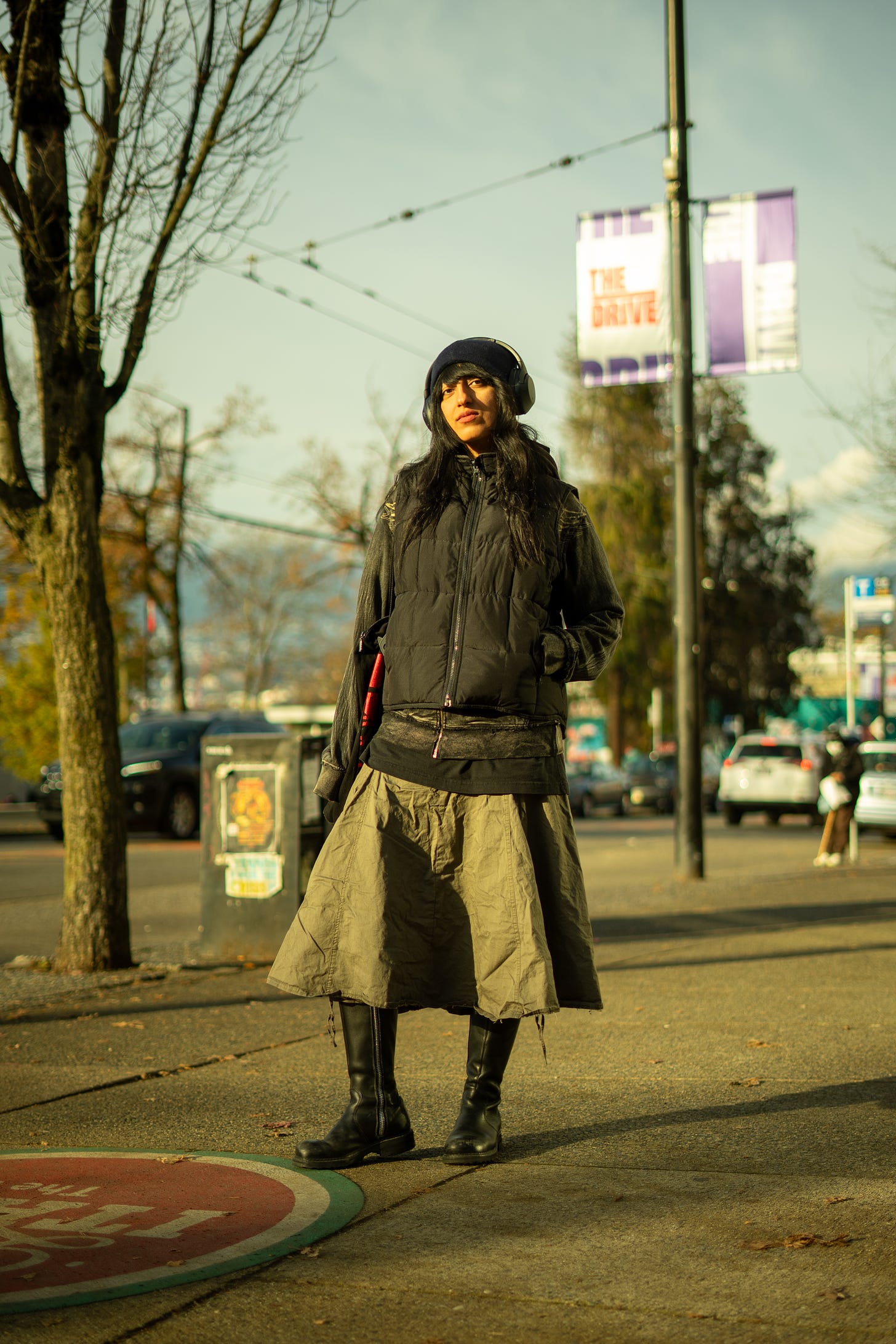
Another awesome example I saw this past weekend was the one worn below. I had just missed Dom (pictured left) at Alterior during the culture crawl and was walking back down commercial to see if I could snap a photo.
Luckily I was able to flag him down from across the street as I wanted to get a photo of him in his newly released pants (see INS(oev)IDE #4 for more info on those!).
Again, two people I’d consider in the “innovators” part of the curve in my experience seeing them around the neighborhood and the projects they work on.
Both outfits in this photo are unlike anything I’ve seen lately and with so many attributes I want to find ways to mimic/integrate them in how I express through clothing as well. Definitely elements I will be tuning my eye to for this winter.
“Innovators may include fashion designers and apparel manufacturers. Once the innovators and early adopters are seen wearing and heard discussing an innovation, others are likely to adopt the style since the innovators and early adopters have made it safe to do so.” (Mower et. al.)
The maxi in this photo does a similar thing as the one in above. For me, it evolves everything I’ve seen this summer and innovates it for the fall. With many of the summer looks being super light and flowy materials, the heavier looking bunched and cinched style of this one really stands out. The same combination of the tech layer underneath for warmth juxtaposing a more “organic” feeling piece is what caught my eye as I was editing this photo. The more I analyze the photo the more I see how the two outfits contrast and complement one another at the same time, and I encourage you to take another look or two. (Another thank you to them for crossing the street for me as I had my kid with me and wasn’t as nimble to get across as I used to be.)
Final Thoughts
I’d like to think my eye has always been tuned to the innovators in this clothing world. From a young age I’ve always been curious about “what’s next” in terms of clothing and have always played with integrating new ideas, silhouettes, and looks into my repertoire. Not that I can always be an adopter of those styles, I don’t think everyone can, or has to, but it’s always fun to find ways to integrate elements of “what’s next” to find a way to be unique and different as we navigate getting dressed in the morning.
I really did not intend for this post to be this long, but I hope you enjoyed it.
I will be putting together a “pre-order” round of books at a discounted price within the next couple of weeks, follow the Instagram stories for more information.
Retailers in the neighborhood will be stocking them soon as well!
md

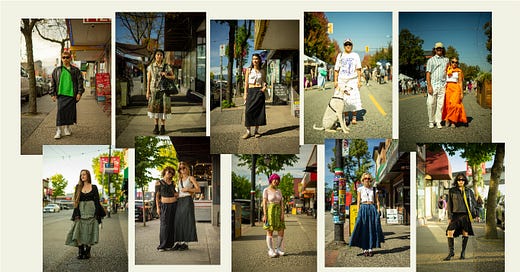




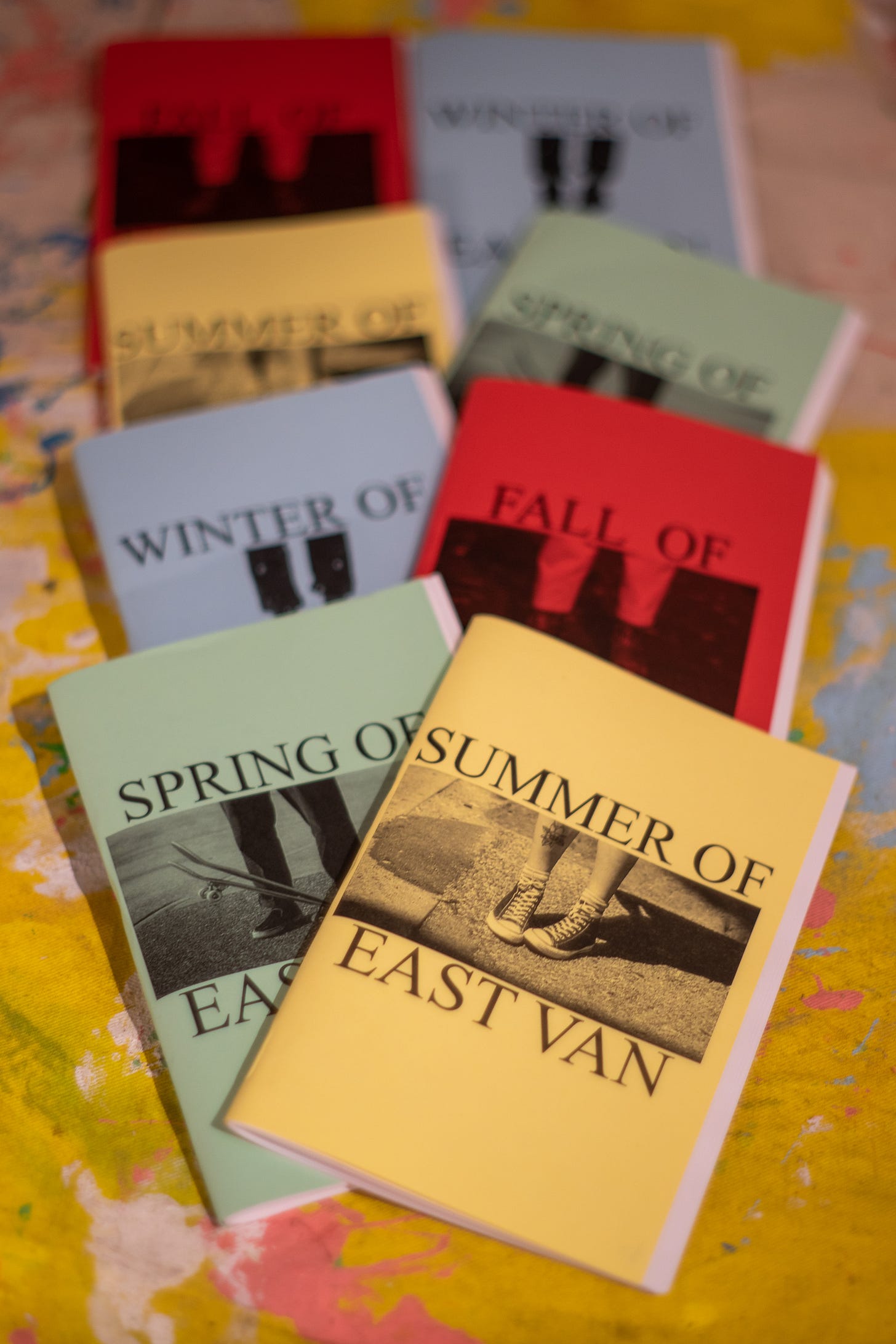
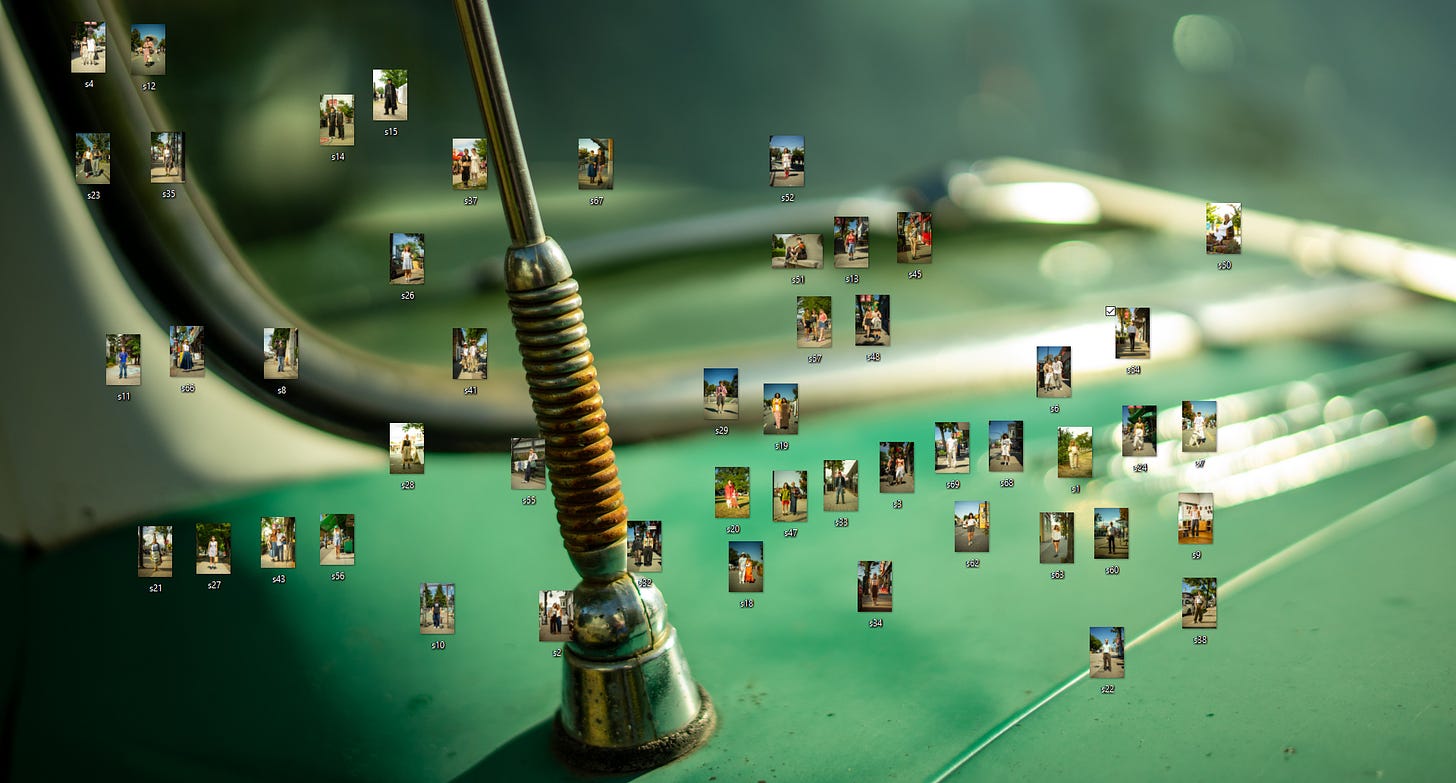

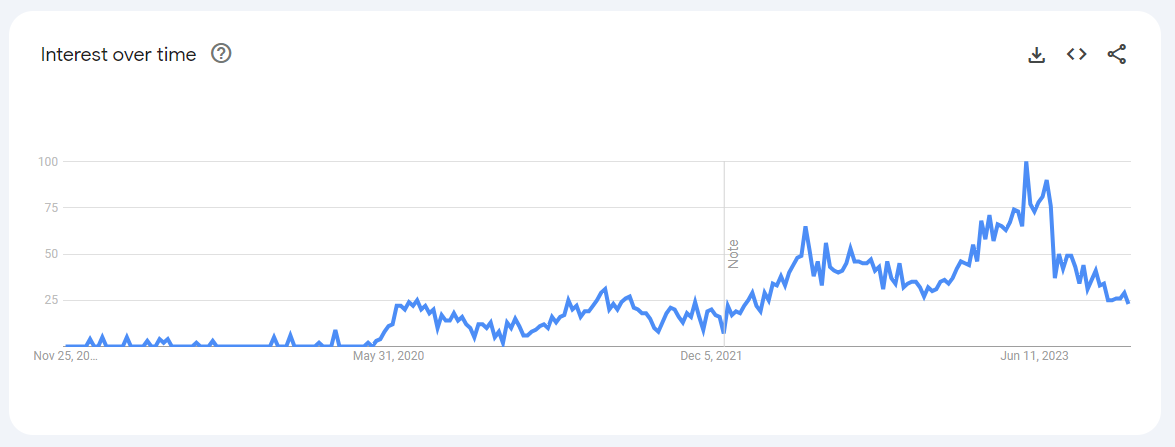
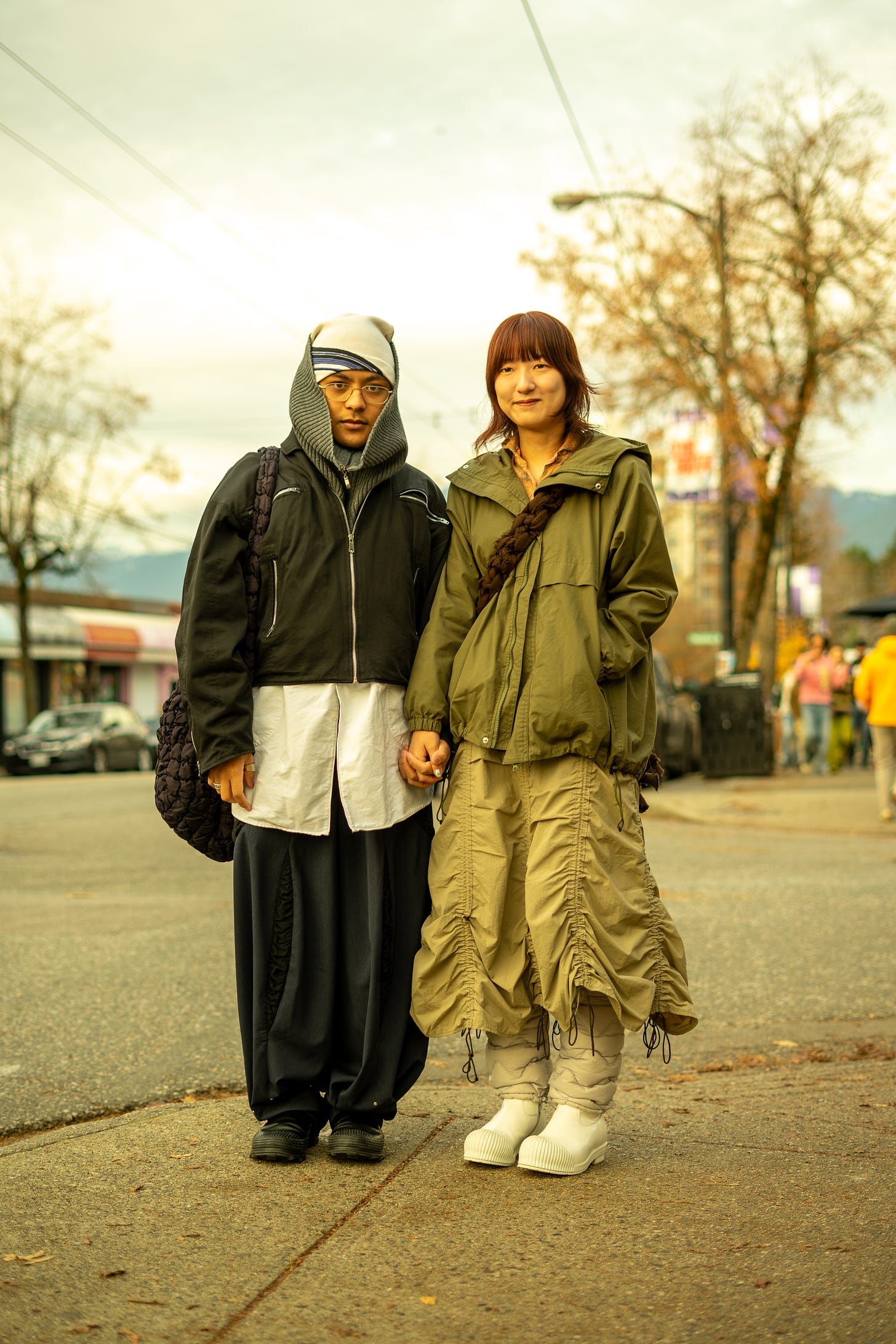
Love this!